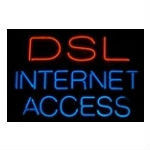 In the past few years, we’ve seen much momentum with FTTH. The FTTH Council recently reported that 9 million homes in the U.S. now subscribe to FTTH and it is available (homes passed) to 21.3 million homes. Yet, from both a global and a U.S. perspective, DSL is still the broadband workhorse for telcos.
In the past few years, we’ve seen much momentum with FTTH. The FTTH Council recently reported that 9 million homes in the U.S. now subscribe to FTTH and it is available (homes passed) to 21.3 million homes. Yet, from both a global and a U.S. perspective, DSL is still the broadband workhorse for telcos.
FTTH Momentum
Much of the FTTH momentum of the past few years can be attributed to the $7.2 billion broadband stimulus program. Additionally, there is significant FTTH activity in the municipal broadband movement. But has FTTH construction peaked in the U.S.? The leading North American FTTH carrier, Verizon, has announced their FiOS plans are just about complete, with no new additional FiOS builds to come.
For smaller independent carriers, the ‘broadband infrastructure disinvestment act,’ also known as universal service reform and the Connect America Fund may significantly slow future new FTTH activity. For telcos, that brings us back to the broadband workhorse, DSL. As wireline carriers chart their long term future, will DSL play a more pronounced role, given the clear trend towards cost cutting?
DSL Innovation
There was a flurry of announcements regarding DSL innovation this week (summarized below), which led me to write this post. Some of these announcements were driven by the upcoming Broadband World Forum. But I also suggest that access vendors recognize that DSL is not going anywhere, and in fact, needs more attention, because it has an important seat at the table when discussing the future of broadband.
Here’s a summary of some of the recent announcements regarding new innovation in DSL:
Zero Touch Vectoring
Vectoring technology is a relatively new innovation for DSL which basically is a noise cancelling technology which reduces cross talk in copper pairs, allowing DSL to achieve much faster bandwidth throughput as a result. Some vendors are claiming they can squeeze 100 Mbps out of VDSL2 vectoring, albeit at rather short distances. It’s very much a FTTN technology, where VDSL2 connects to the home from a fiber fed cabinet.
Alcatel-Lucent reports their new zero touch VDSL2 vectoring reduces or eliminates the need for carriers to replace VDSL2 modems, when moving to a vectoring solution. All service providers can relate to the hassle and high cost of replacing modems at the customer location.
DSL Rings
Genesis Technical Systems (GTS), a company I’m not very familiar with, claims their DSL Rings product can deliver up to 400 Mbps over DSL. GTS is light on the technical details, but DSL Rings appears to be a bonded pair technology. Bonding of copper pairs is another popular approach to getting more performance out of DSL by leveraging multiple copper pairs to the home.
Reverse Powered Fiber to the Distribution Point
Chipset vendor Lantiq announced a new DSL innovation that they claim can deliver up to 250 Mbps over VDSL2 to a distance of about 200 meters. This reverse powered Fiber to the Distribution Point (FTTdp) is another FTTN solution and is a joint effort with Aethra Telecommunications.
According to Lantiq, the solution offers a “…fully reverse powered, based on a customer premise power injector adaptor developed by Aethra Telecommunications. The maximum power budget for the reverse powered distribution point is limited to less than 10W.”
200 Mbps over Copper
Chipset vendor Ikanos launched their Velocity™-3 solution, which they claim can offer up to 200 Mbps over copper pairs. This solution is also based on vectoring technology and Ikanos says it can support up to 384 copper lines in a fiber terminated installation (FTTx).
This is certainly not an all inclusive list of innovation in DSL, but does highlight continued progress with DSL – progress I suspect will continue, given the ongoing role of DSL in the future of broadband.
Image courtesy of flickr user Jeremy Brooks
